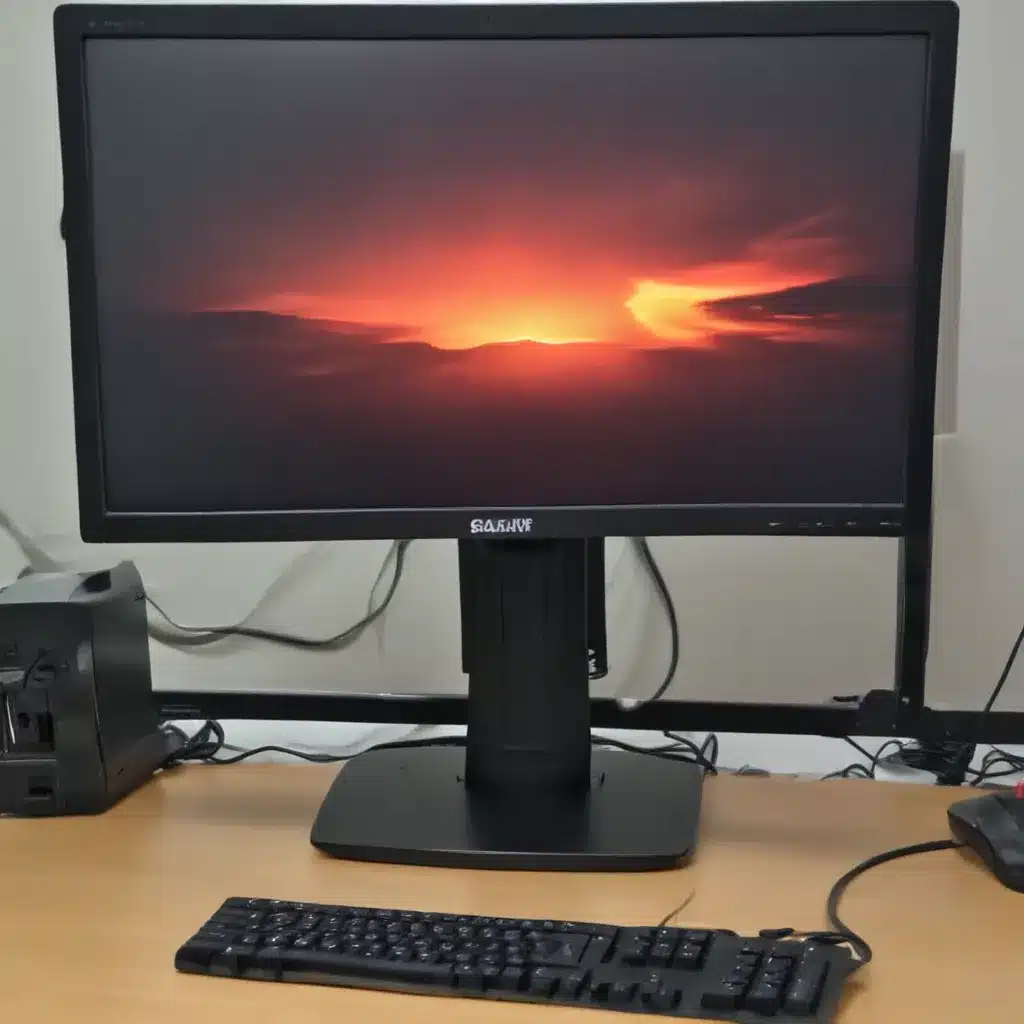Troubleshooting a No Display Issue
You know the feeling – you hit that power button, expecting your trusty computer to spring to life, but instead, you’re greeted with a dark, lifeless monitor. It’s the dreaded “no display” problem, and it can be enough to make even the most tech-savvy among us want to throw our keyboards out the window. But fear not, my fellow computer enthusiasts! Today, I’m here to walk you through a step-by-step guide to getting your monitor back up and running.
First things first, let’s take a deep breath and remember that a no display issue doesn’t necessarily mean your computer is doomed. More often than not, it’s a relatively simple problem that can be fixed with a bit of troubleshooting. And who better to guide you through this process than your friendly neighborhood computer repair expert?
Checking the Basics
Before we dive into the more complex solutions, let’s start with the basics. The first thing I always recommend is to double-check all the physical connections. Make sure your monitor is properly plugged into the power outlet and that the HDMI, VGA, or DVI cable is securely connected to both your monitor and your computer [1]. If you’re using a desktop, also check that the cable is plugged into the correct video output port on the back of your machine.
If everything seems to be plugged in correctly, the next step is to ensure that both your computer and monitor are actually powering on. Check the power lights on your devices – if they’re not lit up, there may be an issue with the power supply or the devices themselves [2]. In that case, you may need to try a different power cable or outlet to rule out any electrical problems.
Checking for Hardware Issues
Okay, so the basics are covered, and you’re still staring at a blank screen. Time to dig a little deeper. One common culprit for a no display issue is a problem with the graphics card. If you have a dedicated graphics card (rather than integrated graphics), try reseating it by gently removing and then reinserting it into the PCIe slot [3]. This can sometimes dislodge any dust or debris that may be causing the problem.
Another potential hardware issue could be with the RAM. Similar to the graphics card, try removing and then re-inserting your RAM modules to ensure they’re properly seated. If you have multiple RAM sticks, try booting with just one at a time to see if that helps [4].
Troubleshooting Software Issues
Now, let’s move on to the software side of things. One of the first things I’d recommend checking is your computer’s BIOS settings. Sometimes, the BIOS can be configured to prioritize the onboard graphics over a dedicated graphics card, which can cause a no display issue. Access the BIOS (usually by pressing a specific key during boot) and make sure the primary display device is set to the correct option [5].
If the BIOS settings seem to be in order, the next step is to try booting your computer in Safe Mode. This can help rule out any software conflicts or driver issues that may be causing the problem. To do this, restart your computer and repeatedly press the F8 key (or the appropriate key for your system) until the Advanced Boot Options menu appears. Select “Safe Mode” and see if your display springs back to life [6].
Exploring External Factors
Finally, let’s consider some external factors that could be contributing to your no display issue. One thing to check is whether your monitor is compatible with your computer’s video output. If you’re using an older monitor, it may not be able to handle the resolution or refresh rate being output by your modern graphics card [7].
Another potential culprit could be a power-saving setting on your computer or monitor. Some systems are configured to enter a low-power mode or turn off the display after a period of inactivity. Check your power settings and see if there’s an option to keep the display active even when the computer is idle [8].
Conclusion
Well, there you have it, folks – a comprehensive guide to troubleshooting that pesky no display issue. Remember, the key is to stay calm, methodical, and persistent. Work through the steps one by one, and don’t be afraid to try different solutions until you find the one that works for you.
And if all else fails, don’t hesitate to reach out to a professional computer repair service. They’ll have the tools and expertise to get your monitor back up and running in no time. Happy troubleshooting!
[1] https://www.reddit.com/r/computerhelp/comments/wua6og/computer_turns_on_monitor_working_fine_but_no/
[2] https://answers.microsoft.com/en-us/windows/forum/all/computer-boots-up-but-doesnt-display-anything/f2dcd771-d4ea-484d-8b74-6c8b03f354fa
[3] https://www.ifixit.com/Answers/View/206319/Monitor+no+signal+after+start+up
[4] https://answers.microsoft.com/en-us/windows/forum/all/pc-boots-up-but-monitor-shows-no-signal-and/bc22a1c3-c085-4aad-b471-cf718b10c14e
[5] https://discussions.apple.com/thread/253751208
[6] https://www.quora.com/When-I-turn-on-my-PC-there-is-no-display-on-the-monitor-and-no-lights-on-the-keyboard-mouse-Motherboard-LED-glowing-CPU-fan-spinning-Whats-wrong
[7] https://forums.developer.nvidia.com/t/jetson-nano-blank-screen-during-and-after-boot/160356
[8] https://h30434.www3.hp.com/t5/Desktops-Archive-Read-Only/Monitor-displays-no-signal-then-goes-to-sleep/td-p/15011/page/5













